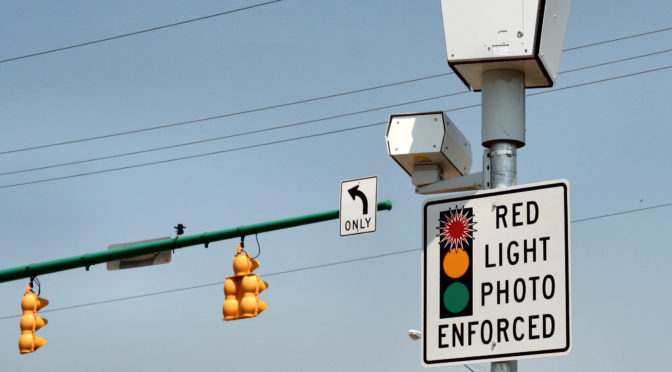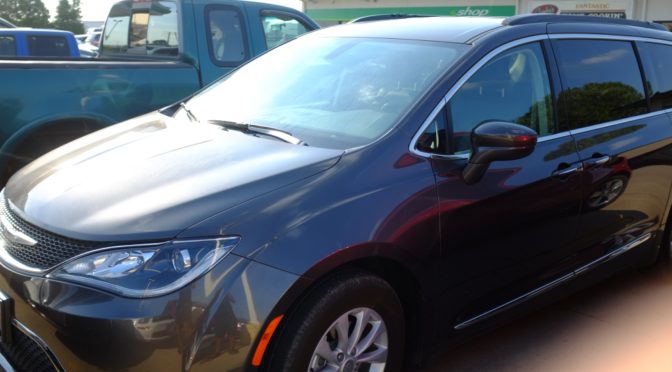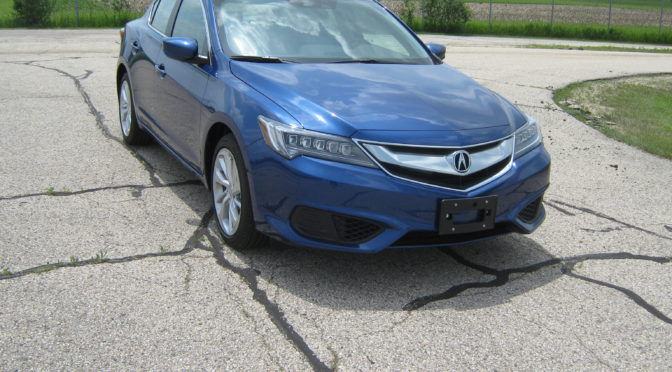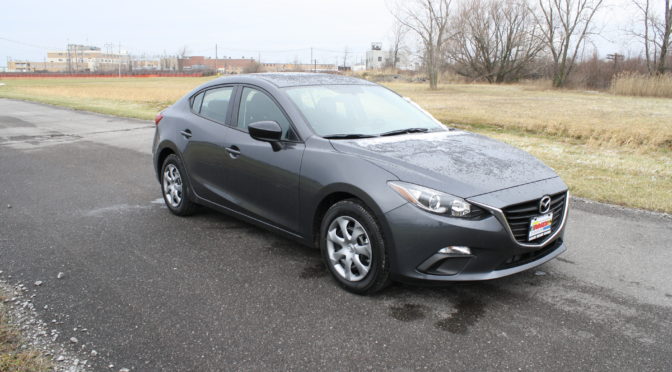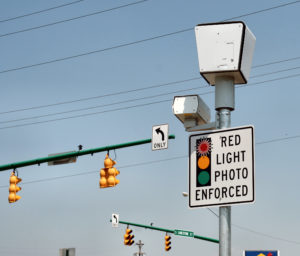
If you’re like most drivers in the United States, you probably have a negative opinion of red light cameras, especially those close to where you drive. Sure, on the surface, the idea of cameras to catch people running red lights might not sound like a good idea, but everyone really knows they’re just around to catch people and give tickets, right?
Not at all. The truth is that red light camera programs are actually quite effective in reducing instances of red light running, as well as fatal crashes resulting from red light running. But how much of an issue is this? How many people are actually dying, how effective are the cameras, and how do we keep our loved ones safe in a political climate where people and legislators are opposed to technology that makes us safer? Let’s take a look together below.
How many people die or are injured from red light running crashes?
Per FARS data, in 2014, 709 people died from crashes involving red light running, while an estimated 126,000 were injured. Given that there were 32,675 deaths overall, the 709 made up a small (2%) fraction, but still a needlessly large one. One out of every 50 traffic deaths resulted from individuals attempting to cross an intersection when the light system indicated they no longer had the right of way.
Do the red light runners die more often, or the people they hit?
Sadly, the primary victims of red light runners are rarely the runners themselves; per the IIHS, the majority of victims are either people occupying the vehicles impacted by the vehicle without the right of way, passengers in the vehicle without the right of way, pedestrians, or cyclists.
Do red light cameras actually reduce red light running and fatalities?
Yes! When enforcement is automated, drivers are less likely to run lights. This is more effective than traditional police enforcement, since it occurs 24 hours a day without the need for officers at given intersections. Cameras also serve as greater forms of deterrence when made public, and also have much better “vision” than manual methods, since they’re always at their intersections. Per the IIHS, red light running fatalities decreased by 21% in cities with activated cameras compared while all kinds of fatal crashes at intersections with signals decreased by 14%. The general decrease at signalized intersections was hypothesized to greater overall caution by drivers cognizant of the presence of cameras in other areas of town.
What happens when red light cameras are removed?
In contrast, when red light cameras were turned off in cities, rates of red light running fatalities increased by 30% while all signalized intersection fatalities increased by 16%. To put it simply, when cameras are removed, drivers revert to old, unsafe, and potentially deadly habits. Cameras make the roads safer for everyone. But opposition to them makes the roads more dangerous for all of us.
What can I do to keep my family safe from red light runners?
Unfortunately, there’s very little you can do to protect your loved ones from red light runners at an individual level, as this is another one of the many societal problems that needs societal solutions. Just as we can’t fully inoculate ourselves from the effects of drunk drivers or speeders, there’s only so much we can do individually to keep our loved ones alive in a driving culture where driving isn’t taken seriously.
To keep people safe in general from red light runners, we need to reduce a culture of disregard for safety and increase a culture of respect for the road. Ideally, this might be achieved by educating people of all ages of the advantages of following traffic laws, but practically, we’re most likely to stop red light running when the vast majority of vehicles on the road are autonomously controlled. I’ll discuss this below before providing individual solutions.
Why would autonomous cars eliminate red light running fatalities?
The reason autonomous cars are the technological solution most likely to eliminate fatalities from running red lights is because self-driven vehicles (truly self-driven ones, not Teslas on “Autopilot”) don’t run red lights. They’re programmed to behave like regular drivers to varying degrees, but they’re also programmed to avoid breaking blatant traffic laws, unlike human drivers. As with vaccines, however, for full effectiveness, you need the vast majority of individuals (in this case, vehicles) in a population to be inoculated (or in this case, self-driven).
Even before reaching a critical mass of autonomous vehicles where enough people began to use them to make their adoption inevitable, you’d still be much safer in a self-driving car at a red light intersection than in a regular one, as an autonomous car would have an array of camera, radar, and laser systems to help detect and avoid perpendicular traffic at intersections.
Until self-driving vehicles are available, what can I do for my family’s safety on an individual level?
My general suggestions for reducing your loved ones’ odds of injury or death in traffic collisions are closely tied to my specific suggestions for avoiding red light collisions. The best solution is to avoid driving entirely; since self-driving vehicles aren’t currently on the market and will likely not be for at least some years to come, I’d recommend using public transportation (i.e., buses and trains) as much as possible. Due to their sizes, both kinds of vehicles are essentially immune to red-light runners, and your odds of survival without death or serious injury are much higher in buses and trains.
If you can’t use public transportation, which is the case with many in the US, my next suggestion would be to exercise extreme caution whenever entering an intersection that has recently turned “green.” Having the right of way doesn’t immunize us from the possibility of being broadsided by inattentive or negligent drivers, and taking a second or two to survey the intersection you’re about to cross on a fresh green life could save your life.
Finally, I’d recommend making sure that whatever you’re driving is equipped with side airbags with head and torso protection at a minimum if a driver, and at least head protection for rear passengers. Ideally, the vehicle should also feature a “good” side impact score from the IIHS. This doesn’t guarantee you’ll survive a red light collision if you’re unlucky enough to be involved in one, but it does significantly increase your odds of doing so, especially if you’re impacted by a vehicle weighing around 3,300 lbs or less (e.g., a mid-sized car or small SUV) and traveling at 31 mph or less, as this is exactly the kind of crash the IIHS’ side impact test is designed to simulate. My side impact resistance guides for small cars, cars overall, SUVs, small SUVs, and minivans address the leading vehicles in impact resistance.
What about rear-facing vs forward-facing? Does that impact red light running crash safety for kids?
Absolutely! A red light running crash is almost always a side impact collision, or a t-bone, and, as with almost every crash situation, it’s safer to be rear-facing during one than it is to be forward-facing, as the forward momentum of your vehicle will drive a child further into a rear-facing car seat (as opposed to directly out of a forward-facing car seat), giving the sides of the seat a much greater chance to protect the child from the forces (and potentially the intrusion) of the impacting vehicle. Once again, rear-face to the limits. The Fllo, Foonf, Rainier, Pacifica, and Extend2Fit make it easy to reach 5 year or 50 pounds before forward-facing.
—
If you find the information on car safety, recommended car seats, and car seat reviews on this car seat blog helpful, you can shop through this Amazon link for any purchases, car seat-related or not. Canadians can shop through this link for Canadian purchases.
Car Crashes: The Safest and Most Dangerous States for Drivers

When it comes to road safety in the United States, not all states are created equally. While the overall death rate per capita from motor vehicle crashes in the US is approximately 10.2 deaths per 100,000 people (in 2014), the death rates per capita from one state to the next can vary significantly.
While the death rate per capita isn’t a perfect measure of driving risk, it is the most common way of comparing the risk of being killed by auto traffic from one place to the next, and it’s the best general way of judging one’s risk of death by traffic as an average citizen in a given area. With that in mind, which states are the safest, which are the most dangerous, and how do they compare to foreign countries with similar populations?
The most dangerous state for drivers per capita in 2014
Wyoming won the dubious distinction in 2014 of being the state with the highest death rate per capita in the US, with a fatality rate of 25.7 individuals per 100,000. With a population of 584,153 people, that translated to 150 deaths. In comparison, in 2014, Iceland, with a population of 329,100 people, experienced its best year since 1939 with 4 deaths, or a fatality rate of 1.22 per 100,000. Both countries have a nearly identical population density, with 6 people / sq. mile in Wyoming and 8.3 / sq. mi. in Iceland. People are spread out about the same way, and there are a similar number of people…but the people are dying in one patch of land, and living in the other.

What a difference! This is a nation with a similar population size to that of a local state, yet one where the average citizen was 21 times less likely to die by auto. Had Wyoming rate been as low as Iceland’s in 2014, only 5 individuals would have died instead of 150.
That’s huge.
In comparison, with a road fatality rate of 25.7 per 100,000 individuals, Wyoming was as unsafe as a number of nations most people in the United States would think they had nothing in common with, like South Africa (25.1), Ethiopia (25.3), Somalia (25.4), and Mali (25.6), per the WHO.
Here’s what an Icelandic official had to say about this figure:
“Our goal is naturally that no one dies in traffic and four fatal accidents are four too many,” said Ágúst Mogensen, chief of investigation of traffic accidents at the Icelandic Transportation Safety Board.
Even so, one can point out this achievement in traffic safety and hopefully, we will experience a year when there are no fatal accidents,” he concluded.
It sounds a lot like what a Norwegian official said about their country’s progress last year when they experienced one of their lowest road fatality rates in history. However, you’d be hard pressed to find a similar statement from officials in Wyoming, unfortunately, and not just because Wyoming came in last.
Year after year, there’s a much greater acceptance of road fatalities in the US compared to prevailing attitudes in many of our fellow wealthy countries, and it’s related to the relentless inevitability of the automobile. There aren’t really any other options to driving throughout large parts of the country, and the auto is associated with our national identity to a much greater degree than is the case in many of our fellow wealthy nations.
What if Iceland just got lucky in 2014?
That’s a great question! Maybe the 1.22 road fatality rate was a fluke. The following year, Iceland would experience many more road fatalities, putting this theory to the test. However, while the Icelandic rate jumped significantly..it still remained far, far better than the Wyoming rate. In 2015, Iceland had an estimated population of 329,425 people, and suffered 16 fatalities, a figure fourfold higher than that in 2014. However, this still led to a much better road fatality rate at 4.86 per 100,000.
How good is a bad year in Iceland (it was their worst year since 2009, where they experienced 17 deaths) compared to a good year for a US state? Let’s take a look at the safest states per capita in 2014 and find out.
The safest states for drivers per capita in 2014
Not counting the District of Columbia, which is, for all intents and purposes, a city and not a state, the states with the lowest death rate per capita in 2014 were Massachusetts and Rhode Island, both of which had road fatality rates of 4.9, or less than half of the overall US road fatality rate of 10.2.

You’ll note that 4.9 is essentially the same road fatality rate as that experienced by Iceland last year (2015), which was not a particularly good year at all for Iceland. That aside, it’s something to be proud of; the safest states in the US, in terms of the average person’s risk of dying via auto trauma, were as safe as one of the safest countries on the planet. Massachusetts had a population of 6,745,408, and suffered 328 deaths. Rhode Island, with a much smaller population of 1,055,173, suffered 52 deaths. New York was barely edged out in 3rd place, with a population of 19,746,227, a road fatality rate of 5.3 per 100,000, and 1,039 deaths.
To put things another way, your odds of dying from a road crash in Mass. and Rhode Island in 2014 were equivalent to your odds of dying from a road crash in Finland in 2013; the population was roughly 5,375,000 while there were 258 deaths, producing a rate of 4.8, per the International Transport Forum, which compares 38 nations annually for road safety trends.
What the numbers tell us is that there are places in the US where your risks of dying from auto traffic are as low as they are in some of the safest areas overseas. There are safer European nations than Iceland and Finland; in 2013, Sweden, the UK, Switzerland, the Netherlands, Denmark, Israel, Spain, and Norway all had road fatality rates beneath 4 per 100,000. However, even if the best US states weren’t fully comparable to the safest countries per capita, they came close. Unfortunately, there were also lots of states that did very, very poorly. As noted, Wyoming was no safer than Somalia for drivers; there were plenty of other states that also had surprising equivalents across the globe in terms of road safety.
On a positive note, there were a number of states that were safer than the US average of 10.2 in 2014: Alaska (9.9), California (7.9), Colorado (9.1), Connecticut (6.9), Hawaii (6.7), Illinois (7.2), Maine (9.8), Maryland (7.4), Massachusetts and Rhode Island (4.9), Michigan (9.1), Minnesota (6.6), New Hampshire (7.2), New Jersey (6.2), New York (5.3), Ohio (8.7), Oregon (9), Pennsylvania (9.3), Utah (8.7), Vermont (7.0), Virginia (8.4), Washington (6.5), and Wisconsin (8.8).
That said, we have much work to do.
What do I do to keep my family safe (whether when driving, walking, or cycling) if we live in an unsafe state?
This is a great question, and it’s one I frequently get from parents concerned about overall road safety. Keep in mind that the above statistics involve people killed by auto traffic whether or not they were in vehicles themselves. In other words, pedestrians and cyclists also feature into the numbers.
When driving, I typically suggest to stick to the basics of driving safely. In particular, making sure every occupant is buckled on every drive, only driving with a 0.00% BAC, and driving the speed limit every single time will make your occupants safer than those of 90% of vehicle occupants on the road.
I would completely avoid motorcycles and scooters. They offer no more protection than bicycles while traveling at much higher speeds among much heavier and more fortified vehicles. It’s the worst of both worlds.
When navigating roadways as a pedestrian, only cross at crosswalks, look both ways, use sidewalks whenever available (I’d go as far as to recommend avoiding any roadways that don’t feature them), and only walk during the daytime.
I’d recommend cycling only on streets with speed limits of 20 mph or below. For streets with higher speed limits, I’d avoid cycling except on protected (segregated) lanes. Unfortunately, these conditions are very hard to meet in most places in the United States, which makes it hard to recommend cycling in many to most parts of the country. We have a long way to go in our respect toward the most vulnerable members of the road.
—
If you find the information on car safety, recommended car seats, and car seat reviews on this car seat blog helpful, you can shop through this Amazon link for any purchases, car seat-related or not. Canadians can shop through this link for Canadian purchases.
3 Across Installations: Which Car Seats Fit a Chrysler Pacifica?
The Chrysler Pacifica is easily the most impressive minivan to come from an American manufacturer in US minivan history. Sleek, stylish, swooping, and futuristic, it’s turning a lot of heads and potentially a lot of pocketbooks from more established competitors like the Toyota Sienna, Honda Odyssey, Kia Sedona, Nissan Quest, or domestic stablemates Chrysler Town & Country and Dodge Grand Caravan. It’s eye-catching and, in my opinion, the best American minivan ever produced (and shouldn’t be confused with its prior namesake, the Pacifica SUV of the 2000s). Stocked with many of the latest safety features, it’s also likely to be a strong competitor among families interested in keeping the most precious of cargo as safe as possible.
As a result, I packed my bags and headed to the nearest Chrysler dealer to check out the Pacifica. Yes, it drives nicely, but what I was really interested in was in figuring out just how good of a job it did at the all-important task of fitting 3 car seats across the 2nd and 3rd rows. However, before looking at what I was able to stuff into those rows, let’s look at some good ideas for when to use which kinds of seats in the Pacifica or in any other vehicle.
The safest configuration we know of when it comes to vehicle safety is rear-facing. This goes for adults as well, but it’s uncommon to find rear-facing seats for adults outside of trains. That said, I typically suggest keeping children rear-facing as long as possible (until 4 or 5 like the Swedes), followed by harnessing until they can safely use booster seats (until at least 5, like the Swedes), and then boostering until the 5 step test is passed (typically between 10, 11, and 12). Beyond that, I suggest keeping kids in the back seat until at least 13, and delaying teen solo driving until 18 if possible. We want our little ones in the safest positions we know of for as long as possible to give them the greatest advantages in a collision.
Keeping these ideas in mind, I set to work to find which infant, convertible, combination, and booster seats would work best in 3 across combinations in the Chrysler Pacifica. It’s my goal to make this list the most thorough on the Internet. If you find the list helpful when shopping for car seats, you can shop through my Amazon link below. I’ll add more seats as I test them over time.
You can access the complete 3 across guide for every vehicle here and the complete list of recommended seats here. The Canadian car seat guide is here. 3 across car seat images are courtesy of yours truly.
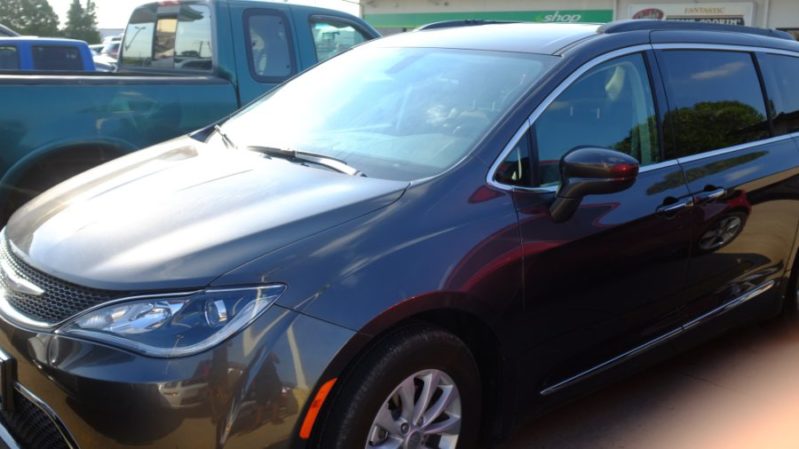 2017, 2018, 2019, 2020 Chrysler Pacifica (RU)
2017, 2018, 2019, 2020 Chrysler Pacifica (RU)
Guaranteed 3 across installations:
Clek Fllo (x3).
Clek Foonf (x3).
Clek Oobr (x3).
Peg Perego Flex 120 (x3).
Maxi-Cosi RodiFix (x3).
Diono Radian 3RXT (x3).
Diono Radian 3RX (x3).
Diono Radian RXT (x3).
Diono Radian R120 (x3).
Diono Radian R100 (x3).
Chicco KeyFit 30 (x3).
Graco Size4Me 65 (x3).
Graco Head Wise 65 (x3).
Graco Fit4Me 65 (x3).
Graco Contender (x3).
Combi Coccoro (x3).
Chicco KeyFit 30, Diono Radian / RXT, Chicco KeyFit 30.
Tips and Tricks:
The current generation of the Chrysler Pacifica is 203 inches long and just under 80 inches wide, which is comparable to the length and width of every other minivan currently available in the US market. However, I didn’t find the back row quite as friendly as that in, say, the Odyssey or in the Sienna. That said, you can still fit just about any seats you’re interested in fitting back there without too much trouble. My biggest suggestion is to use the seat belts, as the LATCH anchors aren’t spaced nearly as wide as I’d like them to be (although that tends to be the case in just about every vehicle I look into).
Something to keep in mind is that if you do choose to use LATCH, you’re going to have a beast of a time in the 3rd row, as there’s only one pair of usable lower anchors (those on the passenger side), as the other anchors aren’t actually aligned with their seats. Additionally, while there are a pair of tethers for forward facing (because forward-facing tethering is important), you can only use the center tether for the center or driver’s side seat, and not for both at the same time. The passenger side tether is fully independent. What this means is that you can only safely install two forward-facing seats in the 3rd row.
 If you find my information on best practices in car and car seat safety helpful, you can do your shopping through this Amazon link. Canadians can shop here for Canadian purchases. Have a question or want to discuss best practices? Send me an email at carcrashdetective [at] gmail [dot] com.
If you find my information on best practices in car and car seat safety helpful, you can do your shopping through this Amazon link. Canadians can shop here for Canadian purchases. Have a question or want to discuss best practices? Send me an email at carcrashdetective [at] gmail [dot] com.
3 Across Installations: Which Car Seats Fit in an Acura ILX?
The Acura ILX is Acura’s smallest luxury car currently sold, and is a variation of the 9th-generation Honda Civic. Manufactured in Indiana and Ohio and released in 2012 for the model years 2013 onward, it’s designed to succeed the Acura Integra, and is designed to compete with other compact luxury sedans including the Lexus IS, Audi A3, and Lexus CT hybrid. It’s the smaller sibling of the similarly new Acura TLX, which itself is a smaller version of the Acura RLX.
Like the vehicles it competes with, the ILX hits the ground running with a range of top notch crash scores and safety features, including side airbags and ESC, as well as frontal crash protection in the latest models. In fact, it’s one of the few vehicles with superior levels of rollover protection at every trim level, which is why I’ve ranked it among the safest small cars you can choose to keep you safe during a rollover.
As a result,even if you aren’t an executive or business-type, the ILX is worth considering if you’re a parent interested in one of the safest small sedans money can buy. As a result, I got up close and personal with the initial generation of the ILX to see just how car-seat friendly it would be for interested families.
Before looking at which car seats did and didn’t fit in the ILX in 3 across setups, it’s worth reviewing a bit of car safety, in terms of which kinds of seats to use and when.
For me, the most basic and essential part of car seat safety involves rear-facing. It’s the safest position we know of, and the longer our kids rear-face, the safer they’ll be, regardless of what kind of vehicle they travel in. I recommend keeping children in rear-facing infant or convertible seats as long as possible (ideally until 4!), then keeping them harnessed in forward-facing seats for several years more (ideally until 8!), and then only switching them out of booster seats when they pass the 5 step test (which typically happens between 10 and 12). The goal is to keep kids in the safest kinds of seats for as long as possible to increase their odds of surviving serious car crashes.
With that all in mind, I got to work with my seats to create what I believe to be the most detailed 3 across guide for the Acura ILX on the Internet. If you find the list helpful when shopping for car seats, you can shop through my Amazon link below. I’ll add more seats as I test them over time.
You can access the complete 3 across guide for every vehicle here and the complete list of recommended seats here. The Canadian car seat guide is here. 3 across car seat images are taken by yours truly or are courtesy of Wikipedia.
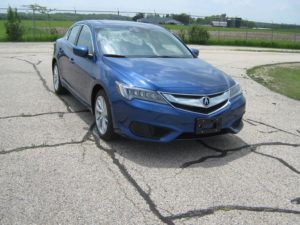 2014, 2015, 2016, 2017 Acura ILX
2014, 2015, 2016, 2017 Acura ILX
Guaranteed 3 across installations:
Clek Fllo (x3).
Clek Foonf (x3).
Diono Radian RXT (x3).
Diono Radian R120 (x3).
Diono Radian R100 (x3).
Chicco KeyFit 30 (x3).
Combi Coccoro (x3).
Tips and Tricks:
The initial generation ILX is 179 inches long and just under 71 inches wide, which means you won’t have too many seats to choose from when it comes to 3 across setups. However, even though the back row isn’t the widest, it’s definitely wide enough for several of the narrower seats as long as you’re willing to use your seat belts instead of LATCH for the installation. Remember that seat belts are as safe as LATCH, and in some cases, safer, depending on the weight limits of your car seats.
Because the ILX is also a rather short vehicle, you’re quite likely to find yourself compromised on front-to-back space, especially if you’ve got taller drivers or passengers. If you’re interested in which safe seats take up the least space, you’ll want to check out my front-to-back comparison chart for rear-facing convertibles.
—
If you find the information on car safety, recommended car seats, and car seat reviews on this car seat blog helpful, you can shop through this Amazon link for any purchases, car seat-related or not. Canadians can shop through this link for Canadian purchases.
Rollover Crash Protection: The Safest Small Cars in 2016
This is the sixth part of a series of the vehicles you want to be in if you’re about to experience a rollover. The previous posts in this series are available here:
1. Rollover Crash Protection: The Safest Family Minivans in 2015
2. Rollover Crash Tests: The Safest Midsized Family Cars, 2016
3. Rollover Survival: The Safest Small SUVs & Crossovers, 2016
4. Rollover Survival: The Safest Family 2 & 3 row SUVs, 2016
5. Rollover Crash Protection: The Safest Luxury Cars in 2016
It has been a pleasure to research, write, and share these comparisons, but there’s still one class of vehicle we haven’t looked into yet: small ones. After all, there aren’t just SUVs, minivans, pickup trucks, and larger cars on the road. Many people choose sub-compact, mini, or compact cars for efficiency (whether fuel-or parking-related) or environmental reasons, or simply because they’re interested in saving money and don’t need larger vehicles. Whatever your reason for driving one, I want you to know what the best small cars are when it comes to rollover avoidance and survival.
I’ve written a series of similar articles on safe vehicles for side impact collisions (here are the safest 2015 cars, small cars, minivans, and SUVs and crossovers for surviving side impacts). Now let’s take a look at which factors play a role in surviving a rollover in a given vehicle.
What does a small car need to keep my loved ones safe before or during a rollover?
1. Electronic stability control. ESC reduces rollover risks by acting like an advanced version of ABS; it can brake individual tires to help keep your vehicle headed in the same direction as your steering wheel. The NHTSA estimates it cuts the risks of a fatal single vehicle crash by a full 50%. This is technology you want on your side whenever you’re behind the wheel (much like the seat belt and frontal airbag).
2. Rollover-sensitive side airbags with head and torso coverage. Once you’ve got ESC, you’ll also want side airbags programmed to activate when a rollover is imminent. ESC doesn’t help you once a rollover is actually occurring, but side airbags that deploy to keep your head from banging against the windows, roof rail, or vehicle frames can help tremendously. Remember that you have no control over your body during a rollover, so it’s not a matter of “bracing yourself” before a crash.
3. A strong roof. Finally, a strong roof is essential for keeping your survival space intact during a rollover. If your car is flipping and your roof crushes when you’re upside down, you aren’t going to live to see the ambulance. Similarly, even if the roof doesn’t collapse into your head but simply buckles enough to detach your seat belt frame or put your airbags out of position, your odds of survival will drop rapidly. A strong roof can mean the difference between walking away from a rollover and being buried a week later.
How strong does a car’s roof need to be to keep from crushing in a rollover accident?
That’s a great question, and if you ask the NHTSA and IIHS, you’ll get two different answers. The NHTSA used to think that a roof only needed to support 1.5x the weight of a vehicle before crushing by several inches, and they also only felt this rule needed applying to vehicles weighing less than 6,000 pounds. The NHTSA’s guidelines didn’t go far enough; in a rollover involving a drop of just a few inches to the ground, a vehicle can easily put several times its own weight on its roof. This leads to the tragedies I’ve spent years writing about on this blog.
As a result, the IIHS came along and made up their own roof strength test and guidelines. They decided that a roof should be able to withstand at least 4.0 times its weight (known as the strength-to-weight ratio, or SWR), to be rated “good.”
Their threshold for an “acceptable” rating is 3.25x, while their threshold for a “marginal” rating is 2.5x. Below that, such as in the 1.5x range the NHTSA used to find acceptable, the IIHS marks a roof as “poor.”
Thanks to the IIHS, the NHTSA finally increased their SWR requirement to 3x the weight of the vehicle for vehicles under 6,000 pounds before the roof could cave in by several inches. They also created a requirement for vehicles between 6,000 and 10,000 pounds of 1.5x vehicle weight. Neither requirement is enough, but both are better than what the requirements used to be.
Given these factors, I put together a list of the best model 2016-17 small-styled cars to be inside when trying to avoid or survive rollovers. I weighed and combined the three metrics I described above for optimum rollover safety. To only consider the best of the best large cars, I limited the list below to sedans and hatchbacks with ESC, roofs with SWRs of 5.0 or greater, and roll-sensitive side airbags; I then sorted these vehicles by roof strength. Each SUV is identified as a 2016 “Top Safety Pick+” by the IIHS, which means they all feature good frontal, side, roof, and head restraint scores, as well as advanced or better frontal crash prevention with optional features. I used the TSP+ as another filter to ensure these vehicles were at the forefront of recommended technologies.
The safest small cars for avoiding and surviving rollovers in 2016
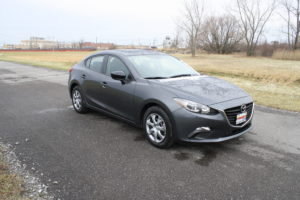 6.36: 2014-2016 Mazda 3 Sedan and Hatchback
6.36: 2014-2016 Mazda 3 Sedan and Hatchback
The Mazda 3 sedan and hatchbacks are jointly the safest small cars you can be in during a rollover, per my estimations, with a roof capable of supporting more than 6.3x the weight of the vehicle before significantly caving in. Like every other vehicle on this list, it also features rollover-sensitive side airbags, good front and side impact scores, and electronic stability control.
If you’re interested in saving money, the 2011-2013 Mazda 3 hatchback also features a great roof score at 5.09x, as well as ESC and side airbags, but the side airbags do not include a rollover sensor. Prior to 2011, neither roof scores nor ESC are present, so I wouldn’t recommend models older than that year.
My full 3 across car seat guide to the Mazda 3 is available here.
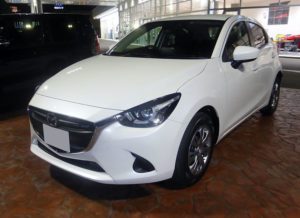 6.22: 2016 Scion iA / Yaris iA / Mazda Demio / Mazda 2
6.22: 2016 Scion iA / Yaris iA / Mazda Demio / Mazda 2
The Scion iA is the same vehicle as the soon-to-be released Yaris iA (since the Scion brand is being discontinued), and is actually a rebadged Mazda 2 (which is also no longer sold in the US), making this the second strong-performing Mazda on the list with a roof capable of supporting 6.22x the vehicle’s weight before collapsing by 5 inches.
If you’re interested in saving money, the Mazda 2 also offers a back catalog to dive into. The 2011-2014 Mazda 2 also features a good roof score with a strength-to-weight ratio of 4.18x, as well as side airbags and ESC. However, the side airbags don’t feature rollover sensors.
My full 3 across car seat guides to the Scion / Yaris iA and Mazda 2 are coming soon.
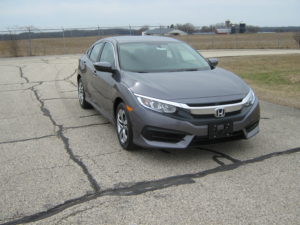 5.78: 2016 Honda Civic Sedan
5.78: 2016 Honda Civic Sedan
The newly redesigned Civic is another strong choice in the small car segment for rollover protection, featuring a great roof score of 5.78x.
To save money, consider all years of the Civic back to 2012, which is the first year where ESC is standard across all trim levels. You’ll also get side airbags, although they won’t have rollover sensors, and a great roof score at 5.85x. Paradoxically, this is actually a better SWR than what’s found in the current generation Civic; that said, the newer Civic is still a much safer overall vehicle, as it also includes a good small overlap frontal crash score as well as basic levels of front crash prevention. I wouldn’t consider models before 2012 due to the lack of standard ESC before that model year.
My full 3 across car seat guide to the Civic is available here.
 5.78: 2016 Volkswagen Golf / GTI / SportWagen
5.78: 2016 Volkswagen Golf / GTI / SportWagen
I recently featured the Golf / GTI as the 2015 leader for small cars when it came to side impact collision protection, and am happy to see the vehicle appear here in the list of the best small cars for rollover protection. It’s well designed to protect its occupants, and features an SWR of 5.78.
Prior to 2016, I’d consider the 2010-2015 Golf to save money, as it features a great 5.25x roof, ESC, and side airbags, although they don’t come with rollover sensors. More broadly, ESC is available from 2009 onward as a standard feature, as are side airbags.
My full 3 across car seat guide to the Golf / GTI is available here.
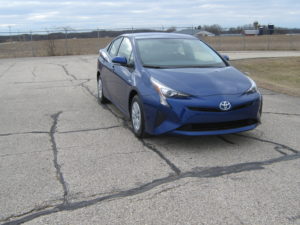 5.67: 2016 Toyota Prius
5.67: 2016 Toyota Prius
The Prius is the most fuel-efficient vehicle on this list, and also makes a strong showing with its 5.67x roof score. It’s also the only hybrid to make the list, and likely to be one of the safest vehicles here. I recently wrote about how the 2011 Prius was also safer than a wide range of larger vehicles, and am happy to see it on this list.
If you’re on a budget, look into the 2011-2015 Prius; it features a good roof with a 4.20 SWR, side airbags, and ESC. Unfortunately, it doesn’t feature rollover-sensitive side airbags until 2016. The 2011 Prius, however, was estimated by the IIHS to have the fewest numbers of driver fatalities of any car in its class, with an estimated 16 driver deaths per million registered vehicle years (4 of which would be attributed to rollovers), a testament to the safety of the Prius.
My full 3 across car seat guide to the Prius is available here.
 5.64: 2016 Acura ILX
5.64: 2016 Acura ILX
The ILX is essentially a modified 9th-gen Honda Civic with luxury updates, and it makes a strong showing with a roof capable of supporting 5.64x its weight. Because it’s a relatively new model, you’ll only be able to go back to 2013 for savings, but every year of availability includes the stellar roof score as well as side airbags, although only the 2016 model year includes a rollover-sensor.
My full 3 across car seat guide to the ILX is avaliable here.
5.27: 2015-2016 Nissan 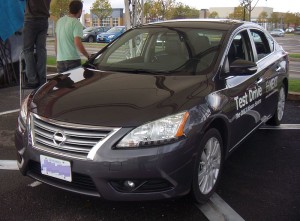 Sentra
Sentra
The Sentra is one of the most affordable vehicles on the list, and the only offering from Nissan. It features a good roof score of 5.27x. Like every other vehicle on the list, it comes with good safety scores all around as well as basic levels of front crash protection.
If you’re interested in saving further money, you might consider the Sentra as far back as the 2011 model year, as this is when it becomes available with ESC standard. However, it also features a roof score of only 3.44x until 2013, which the IIHS grades as “acceptable.” Additionally, while it features side airbags, it overall only has an “acceptable” side impact score, and the side airbags don’t include rollover sensitivity. The roof score improves to 5.27x in 2013 while the side impact score improves to “good.”
My full 3 across car seat guide to the Sentra is available here.
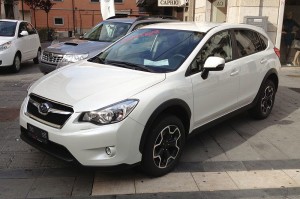 5.20: 2013-2016 Subaru XC Crosstrek
5.20: 2013-2016 Subaru XC Crosstrek
Finally, the Crosstrek is another quality vehicle to keep in mind when looking for a small car with rollover protection. The latest Crosstrek features a good roof capable of supporting 5.20x its weight before collapse.
It’s important to note that, while the Crosstrek and Impreza lines are generally identical in safety features, seeing as the Crosstrek is a raised version of the Impreza, the two vehicles differ substantially with respect to rollover safety, as the Impreza does not feature rollover-sensitive side airbags.
My full 3 across car seat guide to the Crosstrek is available here.
In conclusion, any of these small cars will be among the absolute safest you can be in during a rollover today. They feature ESC to reduce the risks of rollover involvement to begin with, rollover-sensitive side airbags to protect you should rollovers occur, and strong roofs to preserve your occupant space and allow your seat belts and side airbags to do their jobs while the rollover occurs. These are life-saving technologies, and we’re blessed to live in an era where they exist and are widely available and increasingly affordable.
What do I do if the small car I bought or am considering wasn’t on the list?
Due to space constraints, I focused on only listing the best of the best small cars currently available for rollover protection. This doesn’t mean that these are the only safe cars out there right now. Any car with a SWR of 4.0 or higher, ESC, and roll-sensitive side airbags is already going to provide a large amount of protection if you’re unfortunate enough to get into a rollover situation.
If you’re considering an car that doesn’t have the features above, you’ll want to make sure you’ve got ESC at an absolute minimum, followed by a strong roof, and roll-sensitive side airbags. If you have to choose between a strong roof and roll-sensitive airbags, I’d go with the roof score, presuming you have side airbags in both vehicles. However, ESC is by far the most important of the three technologies to have, as prevention is always better than having to deal with the cure, and avoiding a rollover is much better than having technology to increase your odds of surviving it once it’s already occurring.
We can’t control everything. The safest option is still not driving at all, followed by driving as little as possible. But if you’ve got to drive, drive safely, and do your best to choose a safe vehicle. If you’re going to use it with children, definitely check out the plethora of best practice articles I’ve written here on choosing safe car seats, installation tips, seat reviews, and more information to help you make informed decisions.
I loved writing this article, and I hope you enjoyed reading it. I look forward to writing more articles examining various factors in car safety design and how they relate to keeping you and your loved ones safer while on the road. Stay tuned, remember to avoid common mistakes parents make with car seats, and check out some 3 across car seat guides while you’re here.
 If you find my information on best practices in car and car seat safety helpful, you can do your shopping through this Amazon link. Canadians can shop here for Canadian purchases. Have a question or want to discuss best practices? Join us in the forums!
If you find my information on best practices in car and car seat safety helpful, you can do your shopping through this Amazon link. Canadians can shop here for Canadian purchases. Have a question or want to discuss best practices? Join us in the forums!

